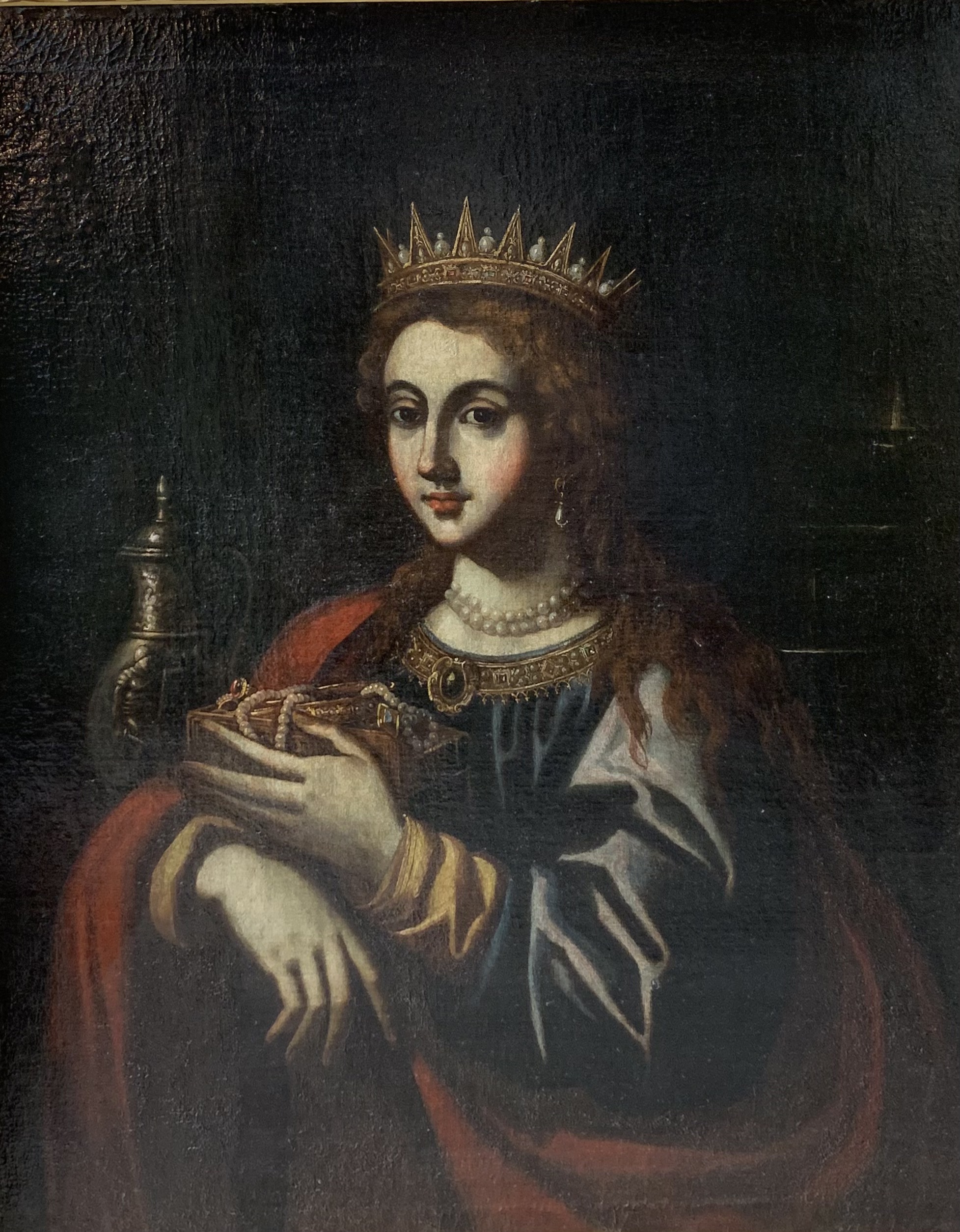Oil on canvas “Allegory of Vanity”. It is probably the vanity of wealth and power whose attributes are visible (money, jewels, weapons (warrior in armor represented on the pitcher), crowns, sceptres…)
The word vanity comes from the book of Ecclesiastes in the Old Testament: “Vanity of vanities, all is vanity”. It evokes the emptiness of human actions and raises the question of time and death. The Middle Ages had developed from multiple bestiaries symbols and types of representation with a moralizing aim that made it possible to express religious and philosophical convictions, to take a look at existence and the human condition. At the beginning of the 17th century, particularly in the Protestant Netherlands, vanity gave rise to the representation of spaces composed of symbolic objects: The skull, the burnt candle, the hourglass, the soap bubble or the watch thus evoke the character transient of life. Terrestrial objects, resulting from human activities, translate the vanity of knowledge (books, scientific instruments…), the vanity of wealth and power (money, jewelry, collector’s items, weapons, crowns, sceptres…) and that of pleasure (wine, food, musical instruments…) These paintings thus made it possible to meditate on the vain and ephemeral nature of human life, the fragility of earthly goods and the futility of pleasures in the face of inevitable finitude. The symbols of vanity will thus invade the canvases and participate in the emergence of still lifes, a pictorial genre in its own right. They will also be introduced into paintings with human figures, genre scenes in Protestant countries, religious scenes in Catholic countries. Looking at our painting we are struck by the obvious inspiration of the work of El Greco.
Ancient relining, posterior gilded wooden frame
Height without frame: 93 cm; with frame: 101 cm
Width without frame: 77 cm; with frame: 95 cm
17th century
Spain






